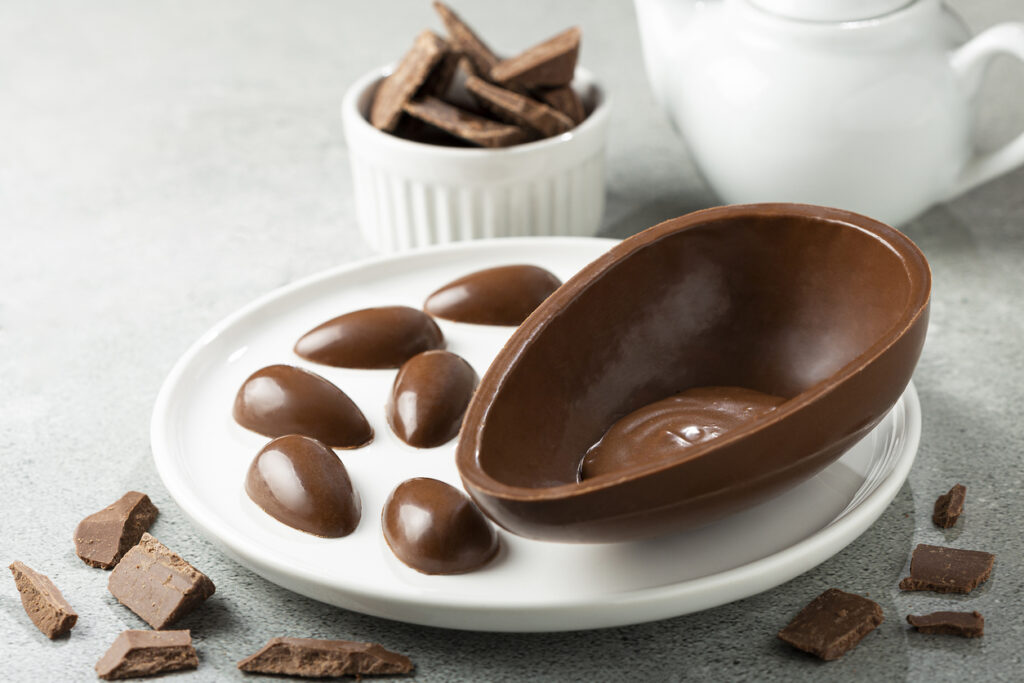Chocolate is arguably the world’s most popular sweet treat. Depending on who you ask, of course.
After, perhaps Christmas, it is the most common time for people to indulge in chocolate if they don’t do so anyway throughout the year.
And synonymous with Easter are the eggs themselves which are loved by children and adults alike all over the world.
The journey to Easter Eggs
The supply chain process is split into eight stages of production: cultivating, harvesting, splitting, fermentation, drying, winnowing, roasting and grinding. Following production, the supply chain process is extended further with logistics which is the final step to providing customers with their favourite seasonal sweet treat.
The journey actually begins with cocoa tree plantations being established which is done by scattering young cocoa trees amongst new shade trees or by planting the cocoa trees between established trees. These are planted in humid tropical climates, with temperatures between 21 and 23 degrees Celsius. This is consistent rainfall periods and a short dry season because these conditions provide good quality cocoa.

Each tree produces 20-30 cocoa pods a year which grows straight from the tree’s trunk and main branches. With this tree also yielding fruit, the crop is carefully pruned, and as a result, it is easier to harvest the cocoa pods. The next step is the labour-intensive task of harvesting the crop.
The harvest is a whole community affair on small West African farms. Large knives are then used to detach the pods from the trees and placed in large baskets on workers’ heads. The pods are then manually split open to remove the beans so they are ready for the two-step curing process. Each pod consists of between 20-40 purple cocoa beans.
The curing process consists of fermenting and drying the beans to develop the chocolate flavour. There are several fermentation methods but the most traditional is the heap method. This requires placing mounds of wet cocoa beans in between layers of banana leaves on the ground for between five to six days. Following this, the drying stage begins. This involves the wet bunch of beans being spread out in the sun or using a more advanced method of special dying equipment.
From plant to factory
Often, a lot of large chocolate brands then buy the cocoa through intermediaries. The beans are then packed into sacks ready to be exported to the brands processing facilities in other locations globally.

After arrival, the beans are cleaned and quality inspected before the winnowing stage takes place. The dried beans are cracked to separate the shell from the nib which is where the small chunks are used to produce chocolate. Afterwards, the roasting phase begins in which the nibs are baked at high temperatures reaching 120 degrees Celsius in special ovens. This is where the colour and flavour is acquired.
Subsequently, the next stage is grinding which creates the basis of all chocolate products. The roasted nibs are grounded in stone mills until a thick liquid chocolate consistency is achieved.
Chocolate to egg
The final step is creating the chocolate egg masterpiece by using highly efficient computer-operated technology which has been used since the mid-20th century. The molten chocolate is placed in heated egg molds which are rotated so there is an even thickness. Following this, the eggs are left to cool and then removed from the molds. Once cooled, the eggs are wrapped in coloured foil and packaged into individual boxes before being sent out for retail. The transportation and exportation throughout the various supply chain stages is vital being a seasonal product. This means they are heavily relied upon for their timings to deliver to large supermarkets and independent stores.











